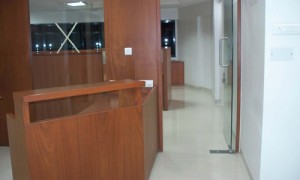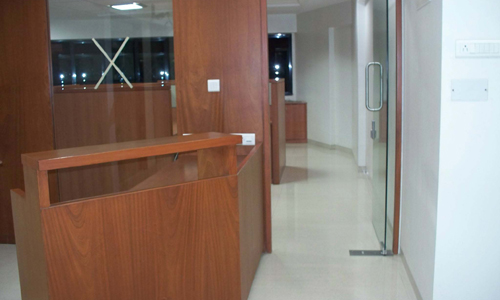By: Ramesh Nair, Managing Director – West, Jones Lang LaSalle India
 With overall vacancy increasing and business and investor sentiment low, why are office rents in many micro markets in Mumbai still increasing? In the recent past, many corporate decision makers have been wondering aloud why the rents and capital values in markets such as Lower Parel and BKC have risen in the last 4-5 months.
With overall vacancy increasing and business and investor sentiment low, why are office rents in many micro markets in Mumbai still increasing? In the recent past, many corporate decision makers have been wondering aloud why the rents and capital values in markets such as Lower Parel and BKC have risen in the last 4-5 months.
The answer to this query is – lack of quality supply in superior locations. It is true that office vacancy levels in Mumbai remain high at 19%, and that there are many vacant buildings. But it is also true that there is a basic scarcity of available good-quality, right-sized Grade A office stock in the city’s prime locations. Corporate tenants who need to relocate, contract, expand or consolidate are still actively scouting for such properties in the CBD and SBD areas. They are, in fact, competing with other prospective tenants and buyers for the restricted range of available properties.
As a result, they are being exposed to the high market rates. Lower-priced properties and the incidence of distressed capital values for prime commercial space in Mumbai’s preferred corporate office locations are few and far between.
The condition is unlikely to change in the short-to-medium term. The post-Lehman Era liquidity fallout on developers has seriously crimped the office development supply pipelines. Also, the new Development Control Regulations (DCR) for Mumbai announced by the State Government earlier this year does anything but encourage commercial construction. The DCR has allotted more fungible FSI to residential construction. The premium payable on fungible FSI for commercial developments is also higher than it is for residential projects.
Moreover, banks, private equity funds and NBFCs are now more reluctant than ever before to fund speculative commercial construction. All this has further impacted the incidence and potential for new office space launches. Most of the projects currently nearing completion were conceptualized in 2007 or 2008.
Residential property prices in Mumbai are significantly higher than commercial space rates. It is a fact that residential projects are self-funded by buyers, while commercial developers have to wait till building completion to start getting cash inflows thereby reducing cost of funding for developers for residential.
There has been a significant increase in construction costs over the last two years, and commercial capital values in low-priced markets such as Thane and Navi Mumbai are not likely to rationalize despite a 25% + vacancy.
All the above mentioned factors will have a definite impact on future commercial supply in the city. This is definitely an opportunity for commercial developers to take a contrarian point of view and start planning new commercial projects.
Meanwhile, many occupiers from the pharmaceuticals, media, logistics, manufacturing and FMCG industries are continuously looking for space in markets such as Lower Parel, Andheri and the Western Suburbs. One of the biggest challenges they face is the fact that most of the office developments completed in the last few years in these locations are IT Parks. This means that there are zoning restrictions with regards to types of occupiers which are allowed in them.
The overall commercial space vacancy in the Central SBD micro market (with sub-markets like Lower Parel) is at 24%. The vacancy for Grade A, non-IT office space vacancy is only 5%. In the Andheri and Western suburbs micro market, the overall vacancy is around 23% but the vacancy for prime Grade A office space is only around 10%.
The completion rate for office projects over the next two years will be much lower than in the preceding three years. Many speculative completions will not see the light of day till 2015-2016. Any reasonable improvement in occupier demand will do nothing but add to the pressure on supply, thereby stimulating further increase of rents and capital values in Grade A buildings within the prime locations. A wait-and-watch approach will therefore prove to be a costly stance for occupiers who are intent of opening offices in these areas. Most of the micro-markets have shown sufficient indications of having bottomed out.
Interestingly, during the peak of 2007-08, commercial space at Nariman Point’s Bhaktawar was transacted at Rs. 525/sq.ft per month, Peninsula Corporate Park in Lower Parel at Rs. 400/sq.ft, Ceejay House in Worli at Rs. 700/sq.ft, Silver Landmark in Andheri at Rs. 175/sq.ft, Mindspace in Malad at Rs. 125/sq.ft, Maker Maxity in BKC at Rs. 480/sq.ft and Oberoi Commerz in Goregoan at Rs. 250/sq.ft. This is an indicator that rentals are currently at a reasonable level and that in bull runs, Mumbai can become extremely expensive and unaffordable.
For the predictable future, occupier demand will remain strongly focused on available high-quality commercial spaces. It is in these locations that we are observing increasing rents. In sharp contrast, less preferred markets (in terms of location and quality) are overflowing with available properties at significantly discounted rates. Rents and capital values in the Grade A commercial buildings of micro markets such as BKC and Lower Parel are expected to increase 8-20% over the next 12-18 months.
There is still a considerable amount of occupier-directed incentives at work in other micro markets and lower quality buildings. These incentives include rent-free periods, lower deposits and investments in tenant improvements. Landlords are extremely keen to protect their base headline rents, and freebies allow them to sustain tenant demand and to prevent vacuums within their portfolios even if the effective rentals are down. However, with the dwindling supply of quality office space, developers holding prime assets may steadily cut down on all value-added incentives over the coming months.





